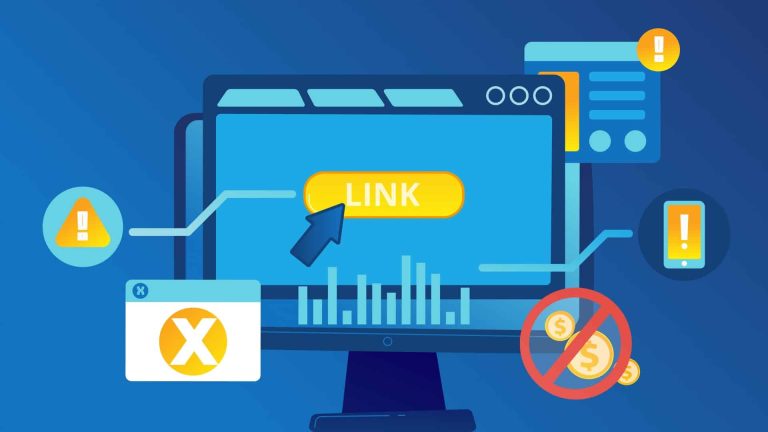Investing effectively in fraud-fighting might ensure you acquire and retain customers. That makes sense, right? Otherwise, protecting online businesses will be more challenging.
With this guide, you can develop an effective online fraud detection strategy for your business.

What’s display fraud?
Display fraud is a fake advertising activity, such as fake traffic, fake leads, and ineffective ad placements. Any conversion generated by display fraud isn’t organic/real numbers. Therefore, ad fraud creates uncertainty, harms the entire industry, and causes a loss of trust and money.
Who is responsible for this fraud? Some publishers can be vigilant. For example, after placing a display ad on their website, they automatically click on their ads via a bot. They’re fraudulently trying to increase their ad revenue. On the other hand, your competitors may also send irrelevant clicks to your ads to harm you. Besides, those who want to collect ad data for various reasons may also resort to fakes.
If you don’t take the necessary precautions against ad fraud, your brand can have a pecuniary loss and intangible damages. Then what to do?
The first way is to be aware of ad fraud.
What’re the effects of display fraud?
Display fraud can have various negative consequences, from financial damage to brand reputation. For example, malicious click activities can eat into your ad budget. You then must spend extra time analyzing the data and questioning its reliability.
How to detect display fraud
You can often spot ad fraud with some metrics and details—high impression counts, low click-through rates and below-average install and retention rates for specific media sources, campaigns, site IDs, or regions.
However, this is no easy feat if you analyze and create strategies alone. We recommend that you use fraud detection technologies. These solutions will help you block fraudulent activities from IP addresses known to send fraud. Some software even allows you to set up automatic alerts to look for site IDs or networks.
- Check your conversion rates: If it’s very high, but the overall conversion rate is lower, look for historical trends in conversion rates.
- Check your bounce rates: Bots don’t navigate the website like humans. They just visit the page. You might have encountered click fraud if you have a high bounce rate.
- Check your CTR (click-through rate): If it’s high, but the conversions aren’t as expected, you should analyze your CTRs afterward.
- Check the expected CTR in the Quality Score for each keyword: If the CTR for a certain keyword is higher than expected, but your other keywords are lower than expected, this could indicate a click fraud.
- Review your display placements: Check your ad placements weekly or even daily. Exclude illegitimate sites or those with high CTRs (over 3 percent of impressions). Plus, you can group IPs with PEMAVOR’s Display Placement IP Grouper.
What technique can you use to detect display fraud?
Know your enemy
Fraudsters are using advanced machine learning and artificial intelligence to combat fraud solutions. While advertisers find new solutions, fraudsters also find new ways. At any time, businesses can encounter new fraud. To prevent them, you first need to know your enemy well.
Monitor metrics
Time to Install (TTI), Clicks to Install Time (CTIT), IP address, and user agent are important metrics you can monitor to detect mobile ad fraud.
Ask these questions
When you review your reports, you may have a clear vision of your next strategy if you get the answers.
- Is CTIT (Click to Install Times) too high or too low?
- Are many old devices and operating systems running? Or many downloads from users running an older operating system?
- Too many clicks or downloads from another country?
- Is session duration down despite increased ad clicks and registrations?
Use of software against ad fraud
Fraud detection and prevention tools analyze and detect potentially suspicious and fraudulent activity. Let’s check out one of the useful fraud detection tools:
- Fraudlogix blocs all bad traffic by updating it every hour with zero latency and risk rating.
- ClickBrainiacs has unlimited traffic tracking, automatic IP blocking/unblocking, fingerprint detection, and real-time alerts.
- AdTector helps marketeers increase their campaign ROI by blocking fake clicks, bots, and crawlers.
- FraudScore gives real-time information supported by advanced algorithms about campaigns to find fraud-related behaviors quickly.
- FraudBlocker guarantees that your PPC ad spend is effectively used because it gives complete transparency and full control over campaigns.
- ScroogeFrog simply its process for higher ROI while safeguarding against fraudulent activities.
- mFilterIt offers up-to-date solutions based on AI, ML, and Data Science.
- ClearTrust has gained clients’ trust in the US, Europe, and the Middle East. Additionally, it strives to boost ROAS effectively.
- 24metrics covers the entire customer journey from clicks to conversions with advanced fraud prevention capabilities.
- With a simple setup process and the capability to process 3+ trillion data points monthly, TrafficGuard provides distinctive protection.
- With easy integration through a JS tag and Google Ads API, Spider AF aims to provide more secure channels for focused marketing efforts.
- Branch Metrics unifies mobile measurement for top brands like Pinterest and Airbnb, with over 40,000 clients.
- ClickCease offers real-time monitoring and automatic blocking of suspicious activity.
- Clixtell‘s superior Neural Network analyzes over 100 data points per click and promptly reports fraudulent activity to Google for blocking.
Key takeaways
- Advertising fraud is a serious risk factor for an entire industry.
- Identify display fraud correctly, detect it, and take action to prevent ad fraud.
Need a custom solution?
We’re building custom solutions for our customers. If you also need a fully-customized solution for your performance marketing strategies, talk to us now.





